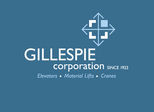- Glenn Siegel
- Apr 17, 2019
Lineage is very important in jazz music, as it is in every art form. Watching the passing baton is one of life’s great pleasures, it gives us the opportunity to both relish the past and anticipate the future. Mitch Frohman, the massively talented saxophonist and flutist, is a living link to Mongo Santamaria, Machito, Celia Cruz, La Lupe, and especially Tito Puente, with whom he spent over 25 years. A nice Jewish boy from the Bronx, the 65-year old Frohman is one of the leading horn players in Latin music, a torchbearer for mambo, guajira, and other classic Latin rhythms.
Frohman performed at the Community Music School of Springfield on April 11 with Zaccai and Luques Curtis, whom he first met when the brothers were precocious pre-teens. The three of them along with drummer Joel Mateo are now the Mitch Frohman Latin-Jazz Quartet, and they enthralled 80 of us as Pioneer Valley Jazz Shares continued its seventh season.
The Curtis brothers, now in their mid-thirties, have also benefited from a long line of elders, having been mentored by Andy and Jerry Gonzalez and Donald Harrison, and trained at the Hartford Academy of the Arts, the Artist Collective, Berklee and New England Conservatory.
On Thursday, the Quartet dipped liberally into From Daddy With Love, their fabulous 2013 release on Truth Revolution Records. “Mambo de Nice,” an original by Frohman, reminded us of the long and happy marriage between bebop and mambo, and featured a fluid Frohman solo on tenor saxophone. “Soprano Con Soul” highlighted another fruitful union, in this case between Motown and Latin music. The bass line which introduced the piece elicited smiles, then knowing nods as the contour of the Temptation’s “Just My Imagination” came into view. Before long there was cha-cha everywhere, along with quotes from other soul classics. The band consistently found a rhythmic sweet spot, providing fertile ground for one brilliant solo after another. “Mongo’s Groove,” a simple, ear-grabbing funk line at medium tempo was a case in point, featuring a full-bodied tenor solo full of cascading wrinkles.
Joel Mateo, born in Ponce, PR now of Brooklyn, was very strong. He modified the drum kit, substituting timbales for rack toms, and had easy access to cow bell, as well. He kept the band “in the pocket” all night. Priscilla Page and I saw this quartet at Subrosa in New York three years ago. Mateo is now a mature captain of the ship with a firm grip on the rudder. I look forward to seeing him in other contexts.
We’ve seen Zaccai and Luques in many situations over the years. I hired their band Insight in 2005 to open for the Ray Barretto Sextet at UMass. The Curtis Brothers Quartet (with Richie Barshay and Reinaldo De Jesus) performed in 2017 as part of our Jazz Shares experiment in locally sourced concert production. They are full fledged professionals, handling their business, which includes Truth Revolution Records. Zaccai will be at the Magic Triangle Series at UMass in November with Avery Sharpe’s all-star sextet.
Mention must be made of Frohman’s skill as master of ceremony. His story-laced song introductions were captivating, and his repeated gag about his various mouth guards, which he took in and out all evening as he switched instruments, had the timing of a seasoned comedian. After going on a bit (“TMI,” said my neighbor) about how the plastic inserts distribute the pressure on his teeth, especially helpful for the aging saxophonist, he paused, “If I’ve helped one person tonight…” It elicited a hearty laugh.
The concert was dedicated to the memory of Victor ‘Cuco’ Guevara, a long-time supporter of arts in the Valley and a charter member of Jazz Shares. Next year’s tribute will feature the Román Diaz Rumba Ensemble at UMass.
Lineage is a descent in a line from a common ancestor. But as the Austrian artist and architect, Friedensreich Hundertwasser reminded us, “the straight line is godless and immoral.” Mitch Frohman and his band of young cohorts are descendants of generations of Latin music greats, having arrived in this spot circuitously, con clave.



























